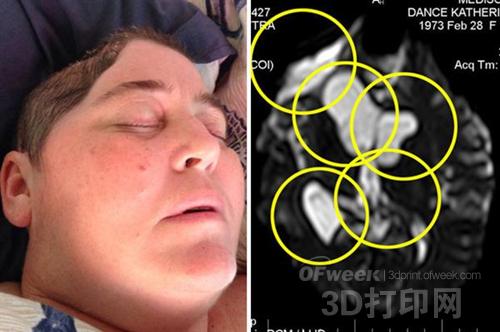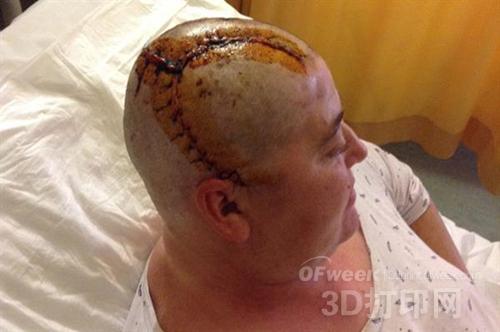3D printing helps patients reconstruct part of the skull
After undergoing a life-saving brain surgery, British diving instructor Katherine Dance turned to 3D printing to help rebuild some of her skulls. The 42-year-old Dance was born in Binfield, England, and now lives in Greece. In October 2014, she found a lump on her forehead while diving on her Mediterranean coast. At first, Dance thought that she accidentally bumped into her head and didn't care, but then she was surprised by the inspection at the British hospital.
The doctor told her after seeing the results of the test that she had five brain tumors in her head. CT and MRI scans showed that Dance had two brain tumors to the left and three on the right. Subsequent MRI scans at local hospitals in Greece also confirmed the presence of tumors.

Two weeks later, the diving instructor underwent a high-risk tumor removal procedure, and during the operation, the doctors discovered complications that caused the original 6-hour procedure to be extended to nearly 14 hours. “When the doctor opened my brain, I found that some of the tumors had grown outside of my skull.†Dance explained, “The development of a tumor in my right front is already accelerating... it was expected to be six hours. It took fourteen hours for the operation."
This is undoubtedly a tough test for Dance and her husband, Jason, but Jason is firmly committed to providing his wife with all possible support. "This incident has caused us huge damage," Jason admitted. “Katherine used to be a very active person. She can do 10 things at a time, and she loves sports very much. She often runs a marathon. Now she has to work hard to walk. But considering that she has lost a skull, I was also affected by five tumors and suffered a stroke. I am proud that she has been able to survive in the past few months.

The brain's mass has now been removed, but she also lost part of her skull because of the doctor's surgery. Now, Dance is looking forward to using 3D printing technology to fix the missing skull, instead of choosing a metal plate. By using scanned 3D images, professional medical staff can provide Dance with a tailor-made implant that protects her brain with minimal physical interference.
3D printed bone substitutes are one of the most effective ways to use 3D printing technology to help patients like Dance. However, 3D printing is still evolving rapidly, and its recent technological breakthroughs mean that patients will soon be able to benefit from the technology in new ways. Not long ago, 3D printing experts in Perth, Australia revealed that they have achieved the use of 3D printed stem cells to regenerate the patient's skull tissue. It is expected that in a few years, this technology may completely subvert the standard bone reconstruction medical treatment. But now, we hope that Dance can recover as soon as possible, and hope that 3D printing technology can provide a perfect solution for her problems.
Beauty Scissors,Hair Scissors,Ophthalmic Scissors,Eyebrow Scissors
Yangjiang Etina Houseware Co., Ltd. , https://www.stjsrobot.com